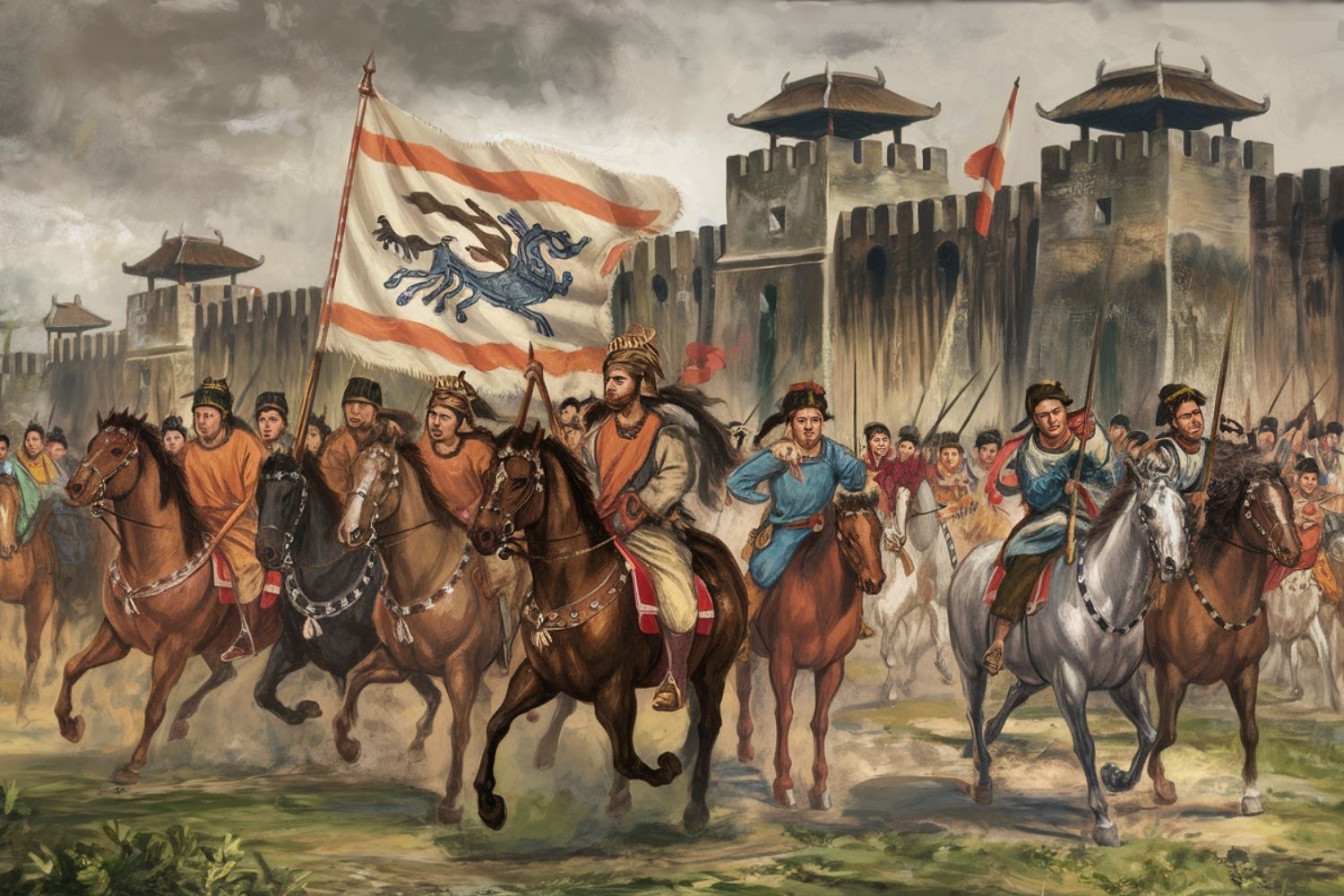
Did you know the Third Mongol Invasion of Vietnam was a pivotal moment in history? This event, occurring in 1287-1288, saw the mighty Mongol Empire, led by Kublai Khan, attempt to conquer the resilient Vietnamese. Despite their vast resources and military prowess, the Mongols faced fierce resistance from the Tran Dynasty. The Vietnamese, under the leadership of Tran Hung Dao, employed clever tactics, including guerrilla warfare and strategic retreats, to outmaneuver their formidable foes. Why did the Mongols fail despite their strength? How did the Vietnamese manage to defend their homeland? These questions reveal the fascinating dynamics of this historical clash. Dive into these 25 facts to uncover the strategies, battles, and key figures that shaped this epic confrontation.
Key Takeaways:
- The Third Mongol Invasion of Vietnam was a pivotal event in the 13th century, showcasing Vietnamese resilience and strategic brilliance in repelling the Mongol forces.
- The Battle of Bạch Đằng, with its hidden wooden stakes and timed attacks, proved that determination and clever tactics can overcome even the mightiest of foes.
The Third Mongol Invasion of Vietnam: An Overview
The Third Mongol Invasion of Vietnam, also known as the Battle of Bạch Đằng, was a significant event in the 13th century. This invasion marked the final attempt by the Mongol Empire to conquer Đại Việt (modern-day Vietnam). Here are some fascinating facts about this historical event.
-
The invasion occurred in 1287-1288, led by Mongol general Toghan.
-
The Mongols aimed to subjugate Đại Việt after two failed invasions in 1258 and 1285.
-
Đại Việt was ruled by the Trần dynasty during the invasions.
-
The Vietnamese used guerrilla tactics and strategic retreats to counter the Mongol forces.
-
The Battle of Bạch Đằng was the decisive confrontation of the invasion.
Key Figures and Strategies
Understanding the key figures and strategies used during the invasion provides insight into the conflict's dynamics. Both sides employed unique tactics and had notable leaders.
-
Trần Hưng Đạo, a Vietnamese general, played a crucial role in defending Đại Việt.
-
Toghan, the Mongol prince and general, led the invasion forces.
-
The Vietnamese used a strategy of scorched earth, destroying resources to hinder the Mongols.
-
Trần Hưng Đạo ordered the construction of wooden stakes in the Bạch Đằng River to trap Mongol ships.
-
The Vietnamese navy lured the Mongol fleet into the trap during high tide.
The Battle of Bạch Đằng
The Battle of Bạch Đằng was a turning point in the invasion. This battle showcased the ingenuity and resilience of the Vietnamese forces.
-
The battle took place on April 9, 1288.
-
The Vietnamese timed their attack with the tides, ensuring the Mongol ships were trapped.
-
The wooden stakes in the river were hidden underwater during high tide.
-
As the tide receded, the stakes emerged, impaling the Mongol ships.
-
The Vietnamese forces launched a fierce attack on the trapped Mongol fleet.
Aftermath and Impact
The aftermath of the Third Mongol Invasion had lasting effects on both Đại Việt and the Mongol Empire. The invasion's failure marked a significant moment in history.
-
The Mongol forces suffered heavy casualties and were forced to retreat.
-
Toghan managed to escape but faced disgrace upon returning to China.
-
The victory solidified the Trần dynasty's rule over Đại Việt.
-
The defeat weakened the Mongol Empire's influence in Southeast Asia.
-
The Vietnamese celebrated the victory as a symbol of national pride and resilience.
Cultural and Historical Significance
The Third Mongol Invasion of Vietnam holds cultural and historical significance for the Vietnamese people. It is remembered as a testament to their strength and determination.
-
The victory is commemorated annually in Vietnam.
-
Trần Hưng Đạo is revered as a national hero.
-
The Battle of Bạch Đằng is studied in Vietnamese history classes.
-
Monuments and memorials have been erected to honor the battle and its heroes.
-
The invasion and victory are depicted in Vietnamese literature, art, and folklore.
Final Thoughts on the Third Mongol Invasion of Vietnam
The Third Mongol Invasion of Vietnam stands as a testament to the resilience and strategic brilliance of the Vietnamese people. Despite facing a formidable foe, they managed to repel the Mongol forces through clever tactics, unity, and sheer determination. This historical event highlights the importance of understanding one's terrain, leveraging local knowledge, and maintaining strong leadership during times of crisis. The Vietnamese victory not only preserved their sovereignty but also sent a powerful message to other nations about the limits of Mongol power. Reflecting on this period, we can appreciate the enduring spirit of a nation that refused to bow to one of history's most feared empires. This chapter in history serves as a reminder of the strength found in unity and the power of strategic thinking.
Frequently Asked Questions
Was this page helpful?
Our commitment to delivering trustworthy and engaging content is at the heart of what we do. Each fact on our site is contributed by real users like you, bringing a wealth of diverse insights and information. To ensure the highest standards of accuracy and reliability, our dedicated editors meticulously review each submission. This process guarantees that the facts we share are not only fascinating but also credible. Trust in our commitment to quality and authenticity as you explore and learn with us.
